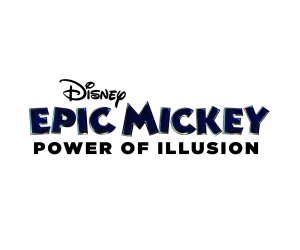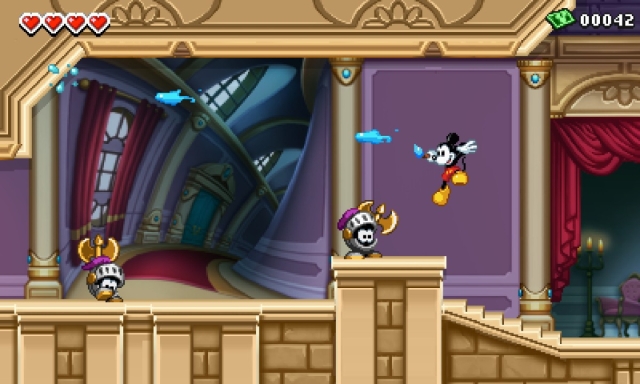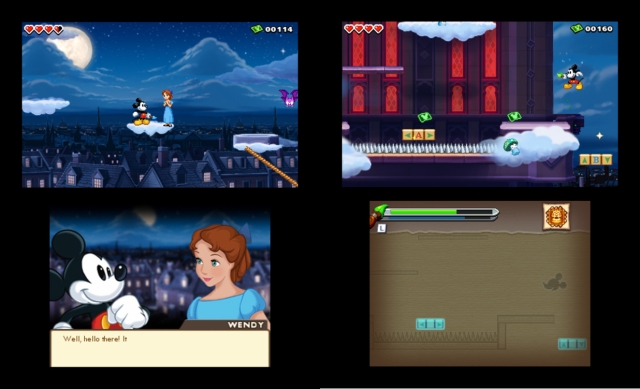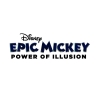 Game: Epic Mickey: Power of Illusion
Game: Epic Mickey: Power of Illusion
Developer: DreamRift
Publisher: Disney Interactive Studios
Available on: Nintendo 3DS Only
Robin has already reviewed the Xbox 360 version of Epic Mickey 2, but the Nintendo 3DS version is an entirely different rendition of the series. As veteran gamers may have gathered from the title, this portable version is a tribute to classic 16-bit Disney platformers of yesteryear, namely the Mega Drive’s Castle of Illusion. In some ways Power of Illusion achieves its aim of mimicking those games, but in others it misses the point entirely.
STORY: Power of Illusion contains a similar story to its console brethren; Mickey is once again called to the Wasteland by Oswald the Lucky Rabbit, to rescue a host of Disney characters who have been kidnapped by Castle of Illusion’s villain, Mizrabel (Who, for some reason, has adopted the appearance of Sleeping Beauty’s Maleficent, instead of the hag she was in the 16-bit era) and has taken them to the dreaded Castle of Illusion, which has somehow materialised into the Wasteland. Mizrabel intends on stealing the life force of the kidnapped, to find a way back to the Cartoon World.
As you can tell, it’s standard Disney fare, with very little in the way of an ongoing narrative. There are short pieces of textual dialogue that appear when encountering each kidnapped Disney character, but it’s all inconsequential; it does the job though.

GRAPHICS: Power of Illusion is completely 2D, with well-drawn sprites over gorgeous backgrounds, and static scenes using authentic Disney-style artwork. If polygons never happened and developers just carried on with 2D up until now, Power of Illusion would be the result, as it invokes the colourful and well-animated graphics of the 16-bit era. Each level is themed on different Disney properties, such as Aladdin and The Little Mermaid, and it’s almost reminiscent of those licensed games as well.
On top of that, the game looks stunning in 3D, once again proving that 2D visuals really “pop” on the Nintendo 3DS. The system’s top screen focuses on the main action, while the bottom screen does little except during dialogue sequences or when you need to interact with the environment (more on that in a minute).
SOUND: What surprised me when the game started proper, was a lovingly orchestrated rendition of the first level theme from Castle of Illusion, which was a SEGA developed title. It’s very easy for these orchestral soundtracks to be unmemorable, but Power of Illusion’s backing music sounds great and helps the game feel like a Disney product.
The game’s sound effects are pretty forgettable, including the odd soundbite from Mickey (whose voice is as shrill as usual, but rarely heard). Not offensive to the ears, just nothing special.

GAMEPLAY: Once again we’re looking at a suitably retro-styled game, with the type of platforming you just don’t see any more. Levels are relatively well-designed, with some exploration required to find all of the many kidnapped Disney characters, which range from mainstays such as Goofy and Pluto, to modern characters like Rapunzel, plus the return of old favourites such as Scrooge McDuck.
The game is split up into three worlds with only a few levels in each, plus a boss battle; making for a very brisk game. Or at least it would be if it weren’t for some incredibly tedious “padding” content. Power of Illusion links itself to the main Epic Mickey series in the form of the paintbrush mechanic. Objects can be drawn or erased by touching them on the bottom screen, and this loads up a time-consuming instance where you’ll either need to trace the outline of an object to draw it onto the environment, or rub a silhouette of an existing object to erase it. It’s as annoying and distracting as it sounds, and the problem is that without this irritating feature the game would be even shorter than it is already.
You navigate from level to level through a standard world map, with worlds connected by a hub map representing the Castle of Illusion. Empty rooms litter the map, which are filled in when you meet kidnapped Disney characters in each level. When talking to them in their respective rooms, they usually request something of you, which manifests as an incredibly mindless fetch quest as you either go to another room in the castle or search for something in a level. Your efforts are rewarded with various items, but honestly it’s all more padding that just isn’t required to finish the game.

LONGEVITY: As mentioned before, Power of Illusion is short. It feels like the only way the game adds any sort of longevity is by the terrible painting mechanics and pointless fetch quests. When you’re dealing with a game based on Disney as a whole, and you’re only basing your environments on three Disney properties, you are doing something horrendously wrong. This could have been the Kingdom Hearts of platformers, but there just isn’t enough levels.
VERDICT: As a homage to retro Disney games, DreamRift had a great foundation for what could have been an amazingly entertaining game for players of all ages. Not adding tacked-on touchscreen functionality to your game is a lesson that most developers had learned in the last handheld generation. The basic platforming is genuinely fun and the game looks and sounds great, but it’s been ruined by overused mechanics and filler tasks that suck the fun out of the game.






